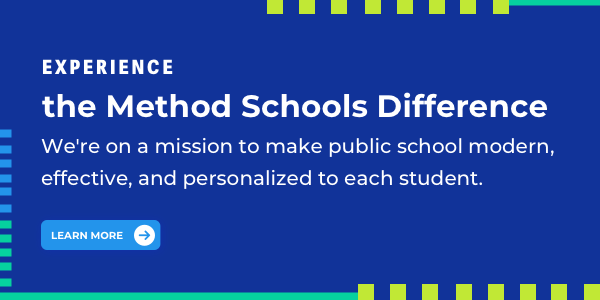3 Ways to Get the Most Out of Your Curriculum
Few things can be more daunting than choosing a curriculum for your child. The challenges are limitless—is the curriculum standards-aligned, is it aligned to your values, will it help your child and their unique learning style, and is it adaptable? There is definitely no single answer to the curriculum question. And it’s likely that there is no single curriculum that will be perfect for your child. The key is to get the most of the curriculum.
1. Think About Curriculum as a Springboard
If you ask any teacher in a brick and mortar classroom if they use curriculum “straight out of the box,” chances are they will say “absolutely not.” Teachers adapt, change, subtract, and add to curriculum all the time. If you are on your own in the homeschooling world, either by choice or circumstance, your freedom to modify curriculum is limitless. You can use curriculum as inspiration for deeper study into a single topic. You can watch movies or listen to podcasts on topics it introduces your child to in their curriculum. If your child has a teacher who is choosing curriculum, it doesn’t hurt to be in communication with their teacher. Bring up your child’s interests and ask whether they might have suggestions for additional study. You might even create alternate assignments with the help of your child’s teacher.
At Method Schools, we believe the parent is the first teacher. As your child’s primary learning coach, you are welcome to review our curriculum. Your partnership with the curriculum will be as important to your child’s learning as your partnership with their teacher.
2. Get Comfortable with Performance
For a long time, curriculum standards focused on knowledge of content. Kids needed to know math facts, important dates in history, all the parts of speech. Things have changed a lot in the last decade. The major focus of standards in states like California is on performance. What does this mean exactly? It means the curriculum focuses on your child’s ability to do things vs. their ability to memorize things. With that knowledge, you can really diversify your child’s lessons and curriculum. The opportunities are limitless. Many websites provide an opportunity for practice or performance standards—some in fun ways. You can use a site like Desmos to work on math skills. You can use a site like NoRedInk to help your child develop writing skills. In this way, they can write about almost anything and still master the standards.
Does this mean a textbook or online curriculum are obsolete? Not necessarily, but it takes us back to our original point about using the curriculum as a springboard. Method Schools uses a proprietary curriculum SmartFox, but our program is so much more powerful than that. We are constantly looking for ways to enhance the curriculum by bringing in outside resources. Our teachers work overtime to bring in supplemental materials and resources. They find interesting field trip opportunities. They share books outside the curriculum. They provide students with enhancements to the curriculum that are only limited by the confines of the internet.
3. Get in the Flow of Things
Psychologists describe flow experiences as “state of being completely absorbed, focused, and involved in your activities at a certain point in time, as well as deriving enjoyment from being engaged in that activity.” It may seem counterintuitive to think about getting into a flow state with curriculum, but this is our goal for every student! If your child is experiencing any academic challenges, look for the things that put them in a flow state. Then expand from there!
What happens if a prescribed curriculum prohibits your child from being a flow state? This can happen and this is an extra challenge for students who may experience difficulties with school overall. Think about the last time your child was truly engaged in something they were doing. They might have been building something or playing a video game. Or creating a work of art. Almost everything we do has some academic tie-in. Finding these tie-ins can help students become more engaged and interested in their curriculum. Finally, remember that thinking about curriculum as a living thing vs a static mandate will go a long way in helping your child embrace learning.




-1.svg)
-1.svg)
.svg)
.svg)
.svg)

.svg)










.svg)
.svg)


